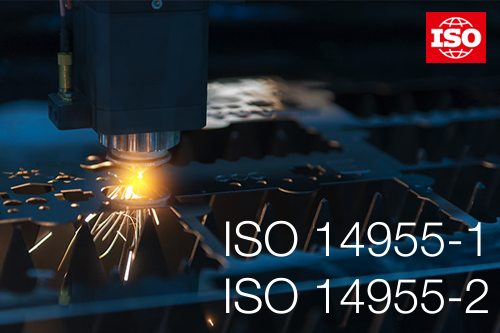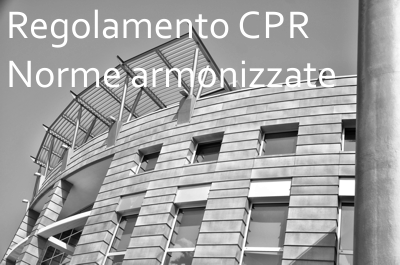Informazione tecnica HSE / 25 ° anno
/ Documenti disponibili:
45.668
/ Documenti scaricati: 34.711.021
/ Documenti scaricati: 34.711.021

ISO 14955-1, Machine tools - Environmental evaluation of machine tools – Part 1: Design methodology for energy-efficient machine tools, addresses the energy efficiency of machine tools during their working life. It identifies the main functions and machine tool components that are responsible for energy demand during the use phase. These components are then compared with previous components or with the state-of-the-art for their future improvement.
ISO 14955-2, Machine tools - Environmental evaluation of machine tools – Part 2: Methods for measuring energy supplied to machine tools and machine tool components, supports the energy-saving design methodology according to ISO 14955-1 by providing practical methods for measuring the energy supplied to machine tools
.....
When the topic of energy efficiency comes up, energy-efficient machine tools don’t immediately spring to mind. Yet machine tools contain motors and auxiliary components whose energy demand varies widely during machining operations. Happily, a new series of ISO standards can help measure energy supplied and improve machine design and performance.
Machine tools are complex power-driven industrial devices employed to manufacture ready-for-use parts or semi-finished products. Encompassing a whole array of tools for cutting and forming metal, wood and plastics, and all their accessories, machine tools are used by companies in a variety of sectors like the automotive industry, general machinery, precision engineering, the medical sector, transport, aerospace, and dies and mould.
Machine tools obviously use different forms of energy, such as electrical energy, compressed air, hydraulic energy, energy hidden in the cooling and lubrication system, etc. Therefore, the energy demand of a machine tool is considered as key data for investment, but does not stand alone. The performance of a machine tool is multidimensional regarding its economic value, its technical specification and its operating requirements, which are influenced by the specific application. Hence why the ecological footprint is a common challenge for all these products and, as natural resources become scarce, environmental performance criteria for machine tools need to be defined and the use of these criteria specified.
ISO has recently published the first two parts of a new International Standard for the environmental evaluation of machine tools, which proposes to analyse machine tools with regard to the delivered functions in order to highlight the commonalities in the huge variety of existing machine tool types.
ISO 14955-1, Machine tools – Environmental evaluation of machine tools – Part 1: Design methodology for energy-efficient machine tools, addresses the energy efficiency of machine tools during their working life. It identifies the main functions and machine tool components that are responsible for energy demand during the use phase. These components are then compared with previous components or with the state-of-the-art for their future improvement.
https://www.iso.org/standard/70035.html
In allegato preview ISO14955-1 riservato abbonati
Elements of eco-design procedure according to ISO/TR 14062 are applied to machine tools. Reporting of results to users and suppliers and monitoring of results are defined.
Evaluation of energy efficiency implies quantification of the resources used, i.e. energy supplied, and of the result achieved. ISO 14955-1:2017 provides guidance for a reproducible quantification of the energy supplied. It does not suggest a methodology for quantifying the result achieved due to the lack of universal criteria. The result achieved in industrial application being machined workpieces, their properties (e.g. material, shape, accuracy, surface quality), the constraints of production (e.g. minimum lot size, flexibility) and other appropriate parameters for the quantification of the result achieved are intended to be determined specifically for each application or for a set of applications.
ISO 14955-1:2017 defines methods for setting up a process for integrating energy efficiency aspects into machine tool design. It is not intended for the comparison of machine tools; also, ISO 14955-1:2017 does not deal with the effect of different types of user behaviour or different manufacturing strategies during the use phase.
Lists of environmentally relevant improvements and machine tool components, control of machine tool components and combinations of machine tool components are given in Annex A. Annex B provides an example of application of the methodology.
NOTE Certain machining processes and specific machine tools can allow significant changes in the environmental impact of machined workpieces, e.g. material reduction for aluminium cans by application of special press technology, higher performance of compressors by machining on precision form grinders[10][13]. The environmental impact of such processes or machine tools might be less important compared to the environmental impact of the machined workpieces and their application. These changes in the environmental impact of machined workpieces are not subject of ISO 14955-1:2017, but might be important if different machining processes or different machine tools are compared related to environmental impact of products. For instance, the accuracy of a machined workpiece might be a significant parameter for the environmental impact of the workpiece in its use stage, and any attempt to compare machine tools is intended to take this into account necessarily.
ISO 14955-2, Machine tools – Environmental evaluation of machine tools – Part 2: Methods for measuring energy supplied to machine tools and machine tool components, supports the energy-saving design methodology according to ISO 14955-1 by providing practical methods for measuring the energy supplied to machine tools.
https://www.iso.org/standard/66354.html
In allegato preview ISO14955-2 riservato abbonati
It supports the energy-saving design methodology according to ISO 14955‑1 by providing measuring methods for the energy supplied to machine tools. The assignment of the energy supplied to machine tool functions requires measurements at machine tool component level. These measurements need to be reproducible and independent of conditions other than those being recorded and documented.
The results of the measurements are intended to document improvements to the design, specifically under energy aspects, and/or to allow evaluating the energy involved in the manufacturing of a given part by a given machine tool. Any comparison requires identical conditions and ensures by specification and measurement that similar results are achieved.
Fonte: ISO

10 Giugno 2016
Comunicazione della Commissione nell'ambito dell'applicazione del regolamento (UE) n. 305/2011 del Parlame...
ID 20752 | 13.11.2023
Regolamento delegato (UE) 2023/2502 della Commissione, del 7 settembre 2023, che modifica il regolamento (UE) 2019/631 del Parlamento europeo e ...
ID 6194 | Update news 20.04.2022
Pubblicata a Marzo 2022 la CEI 0-21:2022
CEI 0-21:2022
Regola tecnica di riferimento per la connessione...
Testata editoriale iscritta al n. 22/2024 del registro periodici della cancelleria del Tribunale di Perugia in data 19.11.2024